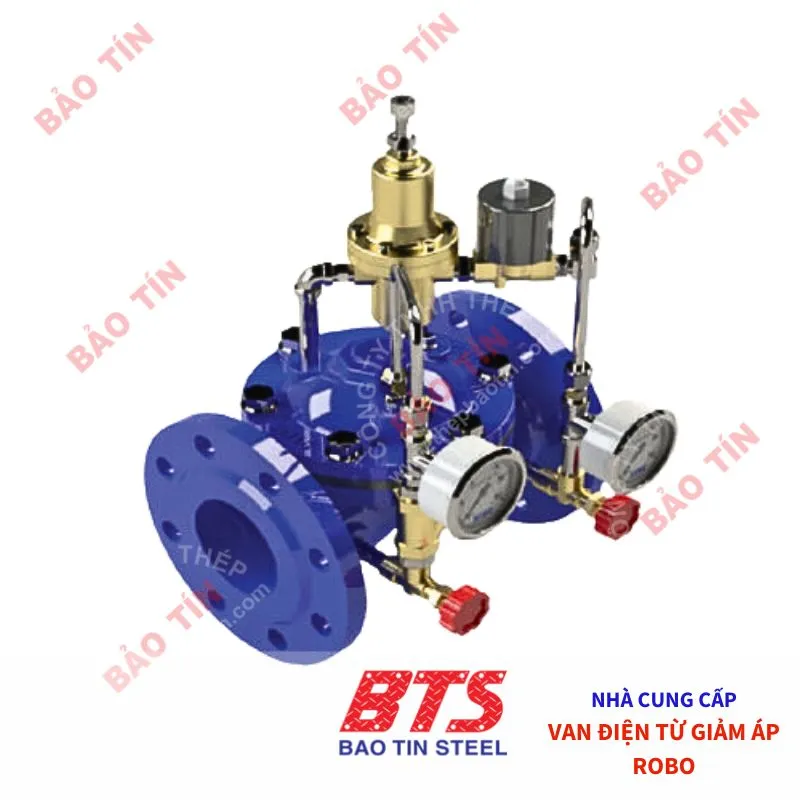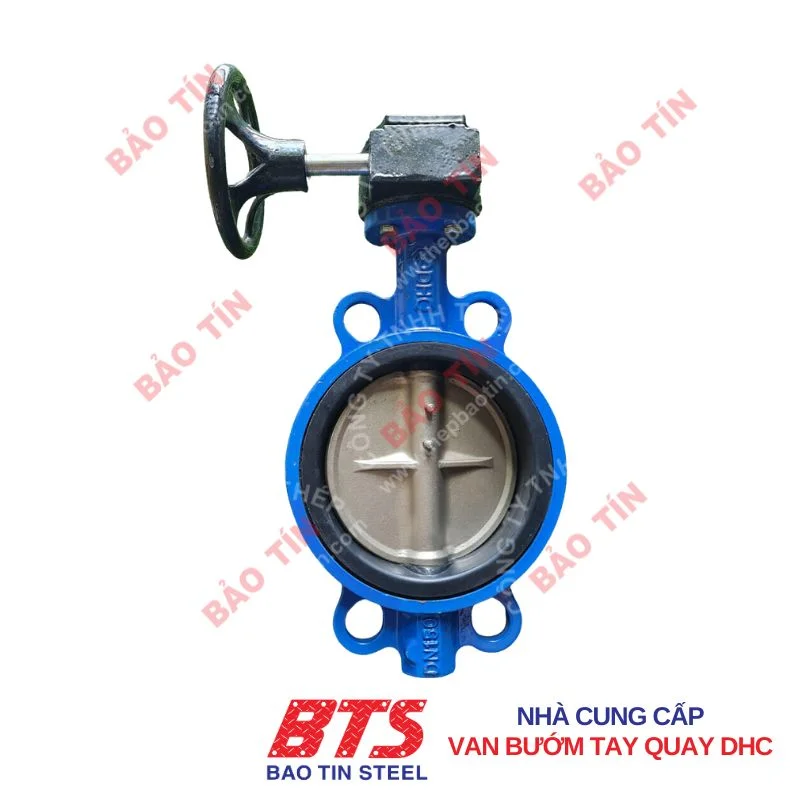Electric Actuated Ball Valve is a device that has gained a lot of attention from technicians and project owners when it comes to automating pipeline systems. If you’re looking for a valve that can open/close electrically, is easy to install, remotely controlled, and operates stably in various environments, then this is the solution you should consider.
Electric actuated ball valves are commonly used in water treatment, compressed air, steam, chemical systems, etc. However, not everyone fully understands the structure and operation of this type of valve. Therefore, today’s article will help you understand it better, allowing you to make a more informed decision for your specific needs.
What is an Electric Actuated Ball Valve?
Electric Actuated Ball Valve is a combination of a mechanical ball valve (the mechanical part) and an electric actuator (motorized actuator). It is used to automatically open/close or regulate the flow of liquids and gases in pipelines through electrical signals.
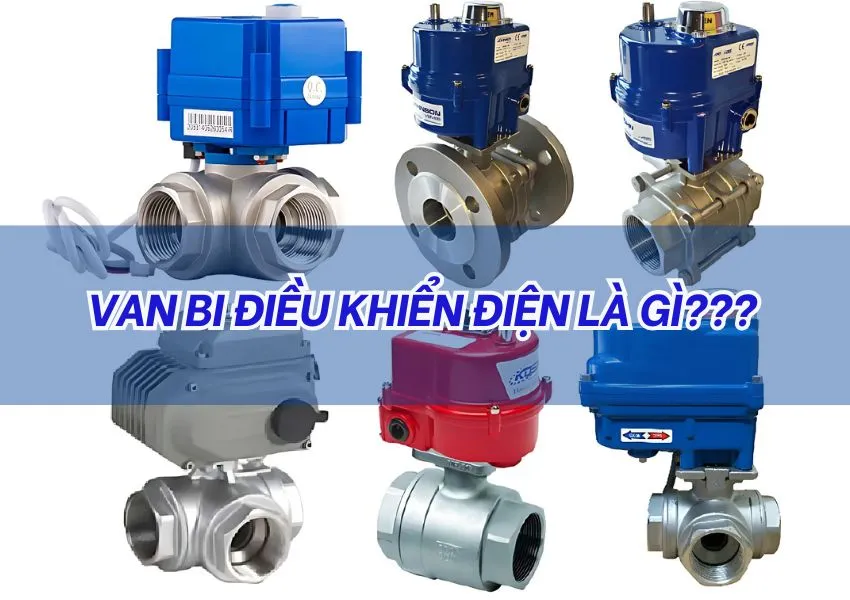
Outstanding functions of the electric control ball valve include:
- It helps eliminate human intervention, especially in hard-to-reach or hazardous locations.
- It allows operators to control the valve from a safe distance, thanks to automated control systems like PLC (Programmable Logic Controller) or DCS (Distributed Control Systems).
- It can be integrated into production lines or treatment systems, enabling full automation of operational steps.
- This is particularly useful with valves that have flow regulation functions, helping to control the flow rate accurately.
- It ensures the system operates stably, efficiently, and minimises operational risks.“
These benefits make electric actuated ball valves particularly useful in environments where safety, automation, and precision are critical. It not only improves safety but also enhances productivity by reducing the need for manual intervention and minimising human error
This type of ball valve consists of 2 core components that work together
- Ball valve: This is the mechanical part of the system, which is also the part that is in direct contact with the fluid inside the pipeline. Motorised Actuator: It receives an electrical signal from the control system.
- Then uses an electric motor to create a rotary motion, directly affecting the ball valve shaft. From there, it controls the valve to open/close or change the opening angle.
Detailed Structure of Electric Ball Valve
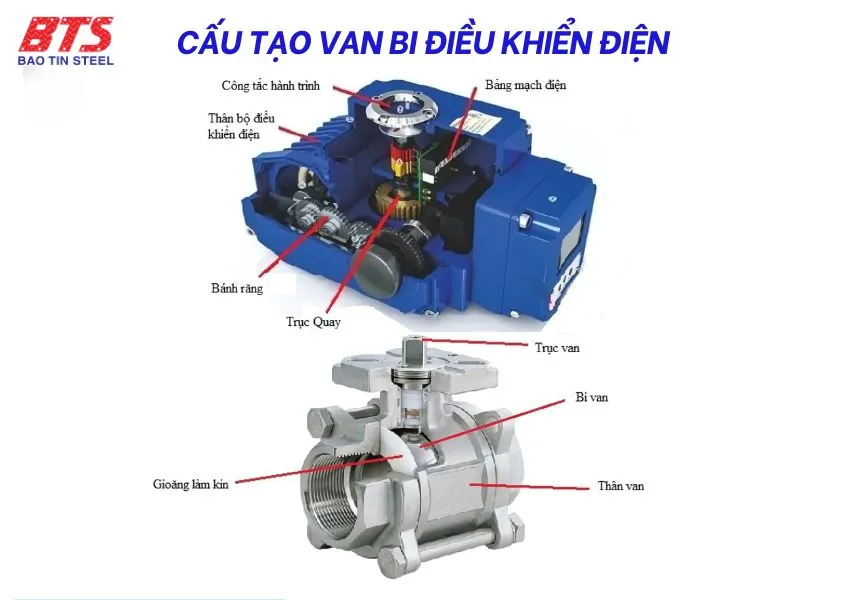
Structure of the Ball Valve (Mechanical Part)
- Valve Body:
The valve body is the outer casing of the valve, housing all internal components. Depending on the working environment and the type of fluid, the valve body can be made from materials such as stainless steel (SUS304, SUS316), cast iron, steel, or plastics like PVC, UPVC, PPH, HDPE. - Ball (Ball Disc):
The ball is hollow with a through hole. It is typically made from the same material as the valve body and comes in two main forms: full bore or reduced bore. - Valve Stem:
The stem is the connection between the ball and the actuator. It is often designed with a blow-out prevention feature to enhance safety, especially when the valve is subjected to high pressure. - Sealing Gasket:
The sealing gasket’s function is to maintain the valve’s tightness and prevent leakage. Common materials used for seals include PTFE (Teflon), EPDM, and Viton. - Connection Type:
The ball valve can be connected to the piping system through threaded, flanged, or welded connections. The choice depends on the technical requirements and the system design.
Structure of the Electric Actuator (Motorized Actuator)
- Controller Housing:
The housing is the external part that protects the motor and the circuit board. It is usually made of cast aluminium or high-grade plastic. These housings are designed to be dustproof and waterproof, meeting IP65 and IP67 standards, making them suitable for both indoor and outdoor installations. - Electric Motor:
The electric motor is the heart of the actuator. It generates rotational force to turn the valve stem. Various voltage options are available, such as 24VDC, 220VAC, and 380VAC, depending on the system requirements. - Gear Reduction System:
This system helps reduce the motor’s rotational speed while increasing its torque, allowing the motor to control larger valves that require high-pressure resistance. - Limit Switches:
Limit switches are installed inside the actuator to determine the fully open or fully closed positions of the valve. When the valve reaches the desired position, the limit switch automatically cuts off the electrical supply, protecting the motor from overload. - Control Circuit Board:
The control circuit board receives the control signal (ON/OFF or linear), processes it, and transmits the operational command to the motor. Higher-end models often feature additional intelligent control functions. - Capacitor:
In some actuator models, capacitors are used to maintain temporary operation or to return the valve to a safe position in the event of a power failure. - Signal Feedback Component (if present):
This component is used in regulating valves. It sends feedback signals (usually 4–20mA) to the central control system, indicating the current valve opening angle. This helps achieve more precise flow control. - Manual Override Handle:
In the event of a power outage or technical issue, users can operate the valve manually. This ensures that the system continues to function without interruption.
Operating Principle of the Electric Ball Valve
The electric ball valve operates fully automatically with the electric motor mounted directly on the valve body. Depending on the application, users can choose between a simple on/off operation or modulate the opening angle for flexible flow regulation. Below is the valve operation process:
Electric Open/Close Mechanism
When power is supplied to the actuator, the internal motor starts rotating. This rotational force is transmitted through the gear system, which then rotates the valve stem by 90 degrees. The rotating stem turns the ball inside the valve. This is the component that determines whether the valve is in the open or closed position.
- The valve can be configured to either fully open/close (ON/OFF) or to adjust to a specific opening angle, which is used in systems that require flow regulation.
With this principle, the valve operates smoothly, accurately, and does not require manual intervention.
Remote control via PLC or switch.
The electric ball valve can be easily connected to the electrical panel, switches, timers, or PLC systems in the plant. When the system sends a control signal, the valve will automatically open or close according to the pre-programmed settings.
This is a significant advantage, allowing the valve to operate in sync with the entire automation system, enhancing safety and convenience. It is especially beneficial in plants with continuous operational processes.
Motor Type: Quick Open/Close or Linear
Depending on the application requirements, the electric ball valve can be equipped with two main types of motors:
- ON/OFF Motor:
This is the most common type. The valve has only two states: fully open or fully closed, making it suitable for simple systems that do not require flow regulation. - Linear Motor:
This type allows the valve’s opening angle to be adjusted according to the electrical signal (typically 4–20mA or 0–10V). This enables precise flow control as per the system’s requirements.
Linear control valves are commonly used in systems that require continuous flow regulation. Typical applications include HVAC systems, water treatment, pressure control systems, and more.
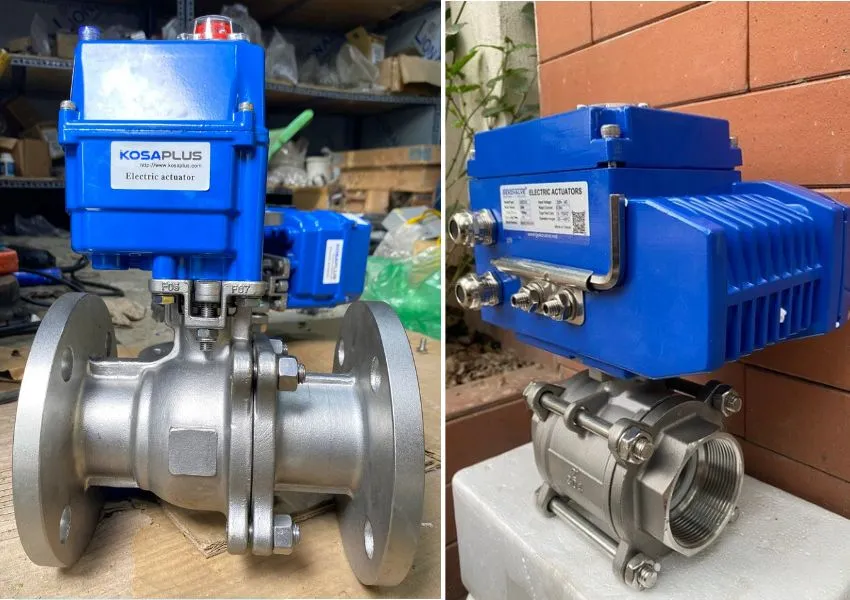
👉 Check out some other valve types at Bao Tin Steel:
Advantages and Practical Applications of the Electric Ball Valve
Below are the outstanding advantages and common application fields of this type of valve.
Advantages
- The valve operates entirely electrically and can be integrated with switches, electrical panels, PLCs, or remote control systems. This reduces manual operating efforts and enhances synchronization throughout the entire system.
- The valve is built with a sturdy structure, utilising high-quality sealing materials (such as PTFE, Viton, etc.), ensuring no leakage and stable operation over long periods, even with frequent open/close cycles.
- The electric ball valve does not require a pneumatic system, which reduces the risk of air leakage. Additionally, the valves are rated for dust and water resistance (IP65, IP67). As a result, they are highly suitable for installation in humid environments, outdoors, or areas not requiring explosion-proof standards.
Common Applications
Electric ball valves are widely used in various fields:
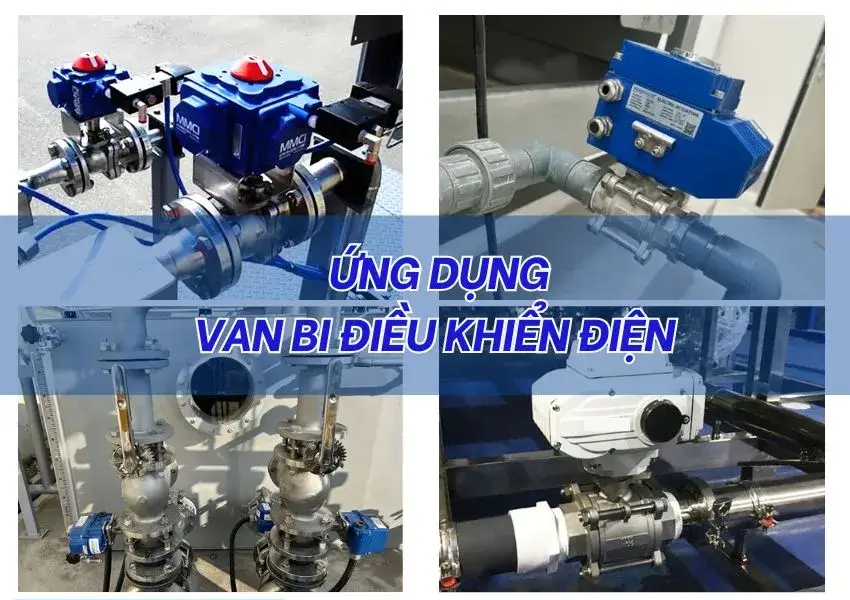
- Water Treatment Plants:
Used in filtration systems, automatic water supply/withdrawal, and controlling open/close based on water levels or flow rates. - HVAC and Fire Protection Systems (PCCC):
Regulating chilled water, air, and steam in central air conditioning systems and fire protection systems. It helps in maintaining accurate temperature and flow control. - Food, Chemical, and Energy Industries:
Installed in mixing lines, liquid transport systems, and chemical solutions. The valve must ensure hygiene, corrosion resistance, and stable flow regulation to meet production requirements.
Conclusion
- The electric ball valve is a device that enables the system to operate automatically, stably, and reduces manual effort. It offers precise open/close control, high sealing performance, and is easy to integrate with electrical panels or PLCs. Therefore, this valve is ideal for factories, water treatment systems, HVAC systems, and industrial production lines.
- Depending on the operating environment and the type of fluid, you can choose a valve body made of stainless steel, cast iron, or steel. The most important factor is selecting the right type of valve to suit your actual needs. This helps prevent waste and operational issues.
- Are you looking to purchase electric ball valves made of stainless steel or cast iron? Contact Thép Bảo Tín today! We specialise in providing genuine industrial valves with full CO-CQ certificates and are always ready to offer expert advice. This way, you can choose the most suitable product for your project.
Tiger Steel is a subsidiary of Bao Tin Steel.


 Tiếng Việt
Tiếng Việt ភាសាខ្មែរ
ភាសាខ្មែរ